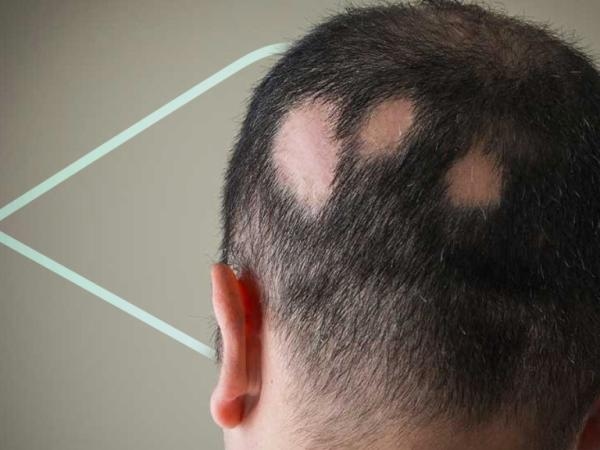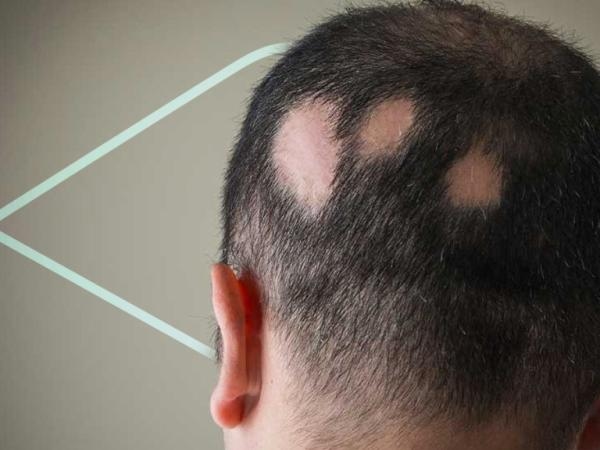Alopecia areata: What causes it and how can it be prevented?

Alopecia areata
Kaloni
Alopecia areata is an autoimmune condition that can affect anyone, regardless of age, gender, or ethnicity. It is characterized by the immune system mistakenly attacking hair follicles, triggering sudden hair loss in the form of round or oval patches —commonly called "coin-shaped" or "ring-shaped" patches—that can appear on the scalp, eyebrows, eyelashes, or beard. Although it is often confused with androgenetic alopecia—associated with common and progressive baldness—its origin and nature are completely different.
Although it can affect people of any age or sex, it most commonly occurs in young adults. The condition does not pose a risk to physical health, but it can have a significant impact on self-esteem and emotional well-being . In many cases, hair can regrow spontaneously, although the disease tends to have relapses or unpredictable cycles of loss and recovery. See more: No memories of being a baby? This would be the scientific explanation.
According to international epidemiological studies, this disease currently affects between 0.1% and 0.2% of the global population. Furthermore, the lifetime risk of developing it is estimated to be around 2%. In approximately 20% of cases , alopecia areata can progress to more severe and chronic forms, such as alopecia totalis (total hair loss on the scalp) or alopecia universalis (loss of all body hair).
In addition to its physical manifestations, this condition has a profound impact on mental health. Various studies have documented that between 30% and 50% of patients experience symptoms of anxiety or depression related to the emotional stress and social stigma associated with hair loss.

Alopecia areata
Volodomestik
See more: The most and least unsafe countries to walk at night: which side is Colombia on? Despite these figures and the deterioration in quality of life it causes, in Colombia alopecia areata continues to be approached, to a large extent, as a purely aesthetic issue. This perception limits access to early diagnosis and specialized treatments, affecting not only the clinical evolution of the disease , but also the psychological well-being of those who face it.
In fact, there are campaigns dedicated to raising awareness about this disease, such as the one by the Colombian Trichology Group and the Colombian Association of Pediatric Dermatology , 'Alopecia areata: nothing to hide, everything to live', which seeks to recognize AA as a real and complex disease, requiring comprehensive and specialized treatment so that patients regain their confidence and well-being.
Can it be prevented?Alopecia areata cannot be definitively prevented, as its origin is related to autoimmune and genetic factors that are not dependent on lifestyle. However, specialists agree that maintaining a balanced immune system can help reduce the risk of flare-ups or relapses . See more: Why do some people turn down the volume of their car's audio when parking?
To achieve this, it is recommended to eat a balanced diet rich in vitamins A, C, D, E, zinc and biotin, in addition to avoiding excessive consumption of alcohol , tobacco and ultra-processed foods, which can cause inflammation and affect hair health.
Stress management also plays a key role in preventing further episodes, as peaks of emotional tension can trigger the disease. Read more: Why six hours of sleep can be more restorative than eight.
Getting enough sleep, engaging in regular physical activity, practicing relaxation techniques such as meditation or yoga, and seeking psychological therapy when necessary are all strategies that contribute to overall well-being. Although there is no definitive cure, adopting healthy habits and seeing a dermatologist at the first signs of hair loss allows for early detection of the problem and better control of its progression.
VALENTINA DELGADILLO ABELLOPortfolio Journalist
Portafolio





